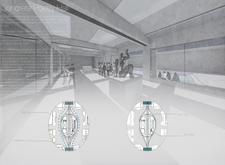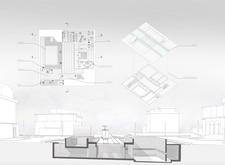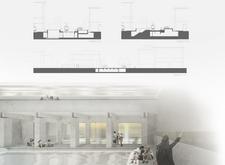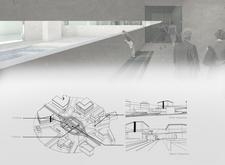5 key facts about this project
At the core of this architectural endeavor lies the concept of connectivity, both physically and socially. The design integrates seamlessly into its context, allowing for fluid movement between the interior spaces and the outdoors. The exterior façade is characterized by a blend of materials, including concrete, glass, wood, and steel, each selected for its functional properties as well as its aesthetic contribution to the overall composition. Concrete serves as the primary structural element, offering robustness, while expansive glass panels bring natural light into the interior, blurring the lines between inside and outside.
The architectural layout is designed with an open-plan approach that maximizes the usability of space. This strategic organization encourages social interaction, with communal areas purposefully placed to serve as gathering spots for residents. Landscaped terraces and rooftop gardens not only enhance the beauty of the structure but also promote environmental sustainability by providing green spaces that can mitigate urban heat and improve air quality.
One of the noteworthy aspects of this project is its emphasis on user-centric design. Through careful research and community involvement, the architects have created spaces that reflect the lifestyle of its intended users. The integration of flexible spaces allows for adaptability, accommodating various activities and fostering a sense of community. These design ideas extend to the interior, where a thoughtful mixture of private and public areas offers individuals both solitude and opportunities for social engagement.
Sustainability is a key theme throughout the project, with features designed to minimize environmental impact. The incorporation of energy-efficient systems, such as solar panels and rainwater harvesting, underlines a commitment to reducing the facility's carbon footprint. Additionally, the selection of locally sourced materials supports regional economies and reduces transportation emissions, aligning with the broader goals of sustainable architecture.
The unique design approaches employed in this project are evident in various aspects of its execution. The façade, with its interplay of textures and materials, not only serves aesthetic purposes but also adds functionality, such as optimizing energy efficiency through shading and thermal massing. Furthermore, the consideration of local climate conditions has influenced the positioning of windows and the use of overhangs to regulate natural light and ventilation effectively.
To gain deeper insights into the architectural design, one is encouraged to explore the project presentation, which includes detailed architectural plans and sections. These elements illustrate the meticulous thought that has gone into ensuring functionality and user experience at every level of the design. The architectural ideas reflected in this project exemplify a modern yet respectful approach to its context, making it a valuable addition to the urban landscape. By delving into these resources, readers can further appreciate the intricate details and innovative strategies that define this architectural endeavor.


























